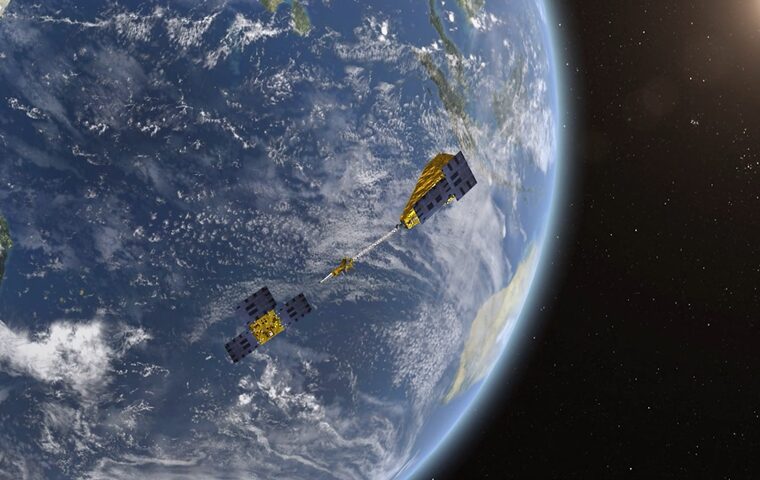A SpaceX Falcon 9 rocket launched six military missile tracking satellites just over a week ago, including two prototypes for the Missile Defence Agency and four for the US Space Force. All are part of a new generation designed to detect Chinese and Russian hypersonic missiles, but also potential threats from Iran and North Korea. Hypersonic missiles, smaller and more manoeuvrable than conventional ballistic missiles, pose a challenge to existing missile defence systems. Traditional satellites can only detect ballistic missiles due to their predictable trajectories and thermal emissions.
The Space Development Agency (SDA) has developed a new surveillance system: a constellation of hundreds of small satellites in low earth orbit called the Proliferated Warfighter Space Architecture (PWSA). These satellites will use infrared sensors and laser communications to detect and track missiles, transmitting the data to the ground to alert the military and guide possible interception actions. Yesterday’s launch included four SDA satellites and two HBTSS (Hypersonic and Ballistic Tracking Space Sensor) satellites for the Missile Defence Agency.
The latter will be equipped with medium field-of-view sensors to provide more detailed data than the SDA satellites. All six satellites will participate in military exercises in the coming months to test their effectiveness in detecting and tracking hypersonic missiles. In the future, the next generation of SDA satellites will incorporate the medium-range detection capability of the HBTSS satellites.

The road to 2025
With this launch, the US military takes a step forward in its defence against hypersonic missiles and aims to strengthen its defence against emerging threats. The SDA’s four tracking satellites, built by L3Harris, are the last the agency will launch in its prototype constellation, the so-called Tranche 0. Beginning later this year, the SDA plans to kick off a rapid-fire launch campaign with SpaceX and United Launch Alliance to quickly build out its operational Tranche 1 constellation, with launches set to occur at one-month intervals to deploy approximately 150 satellites. Then, there will be a Tranche 2 constellation with more advanced sensor technologies.
In late 2023, a SpaceX rocket launched South Korea’s first military spy satellite in response to North Korea’s launch. Seoul plans to launch four more spy satellites by 2025 to monitor North Korea. Seoul’s satellite can detect objects up to 30 cm. Set in orbit between 400 and 600 kilometres from Earth, Seoul’s satellite can detect an object up to 30 centimetres, according to the Yonhap news agency. The launch came less than two weeks after Pyongyang successfully put its own spy satellite into orbit, which it claimed would provide images of major US and South Korean military sites as well as photos of European capitals However, it has not yet revealed any of the satellite images it claims to possess. The North’s launch of ‘Malligyong-1’ was Pyongyang’s third attempt to put such a satellite into orbit, following two failures in May and August.



